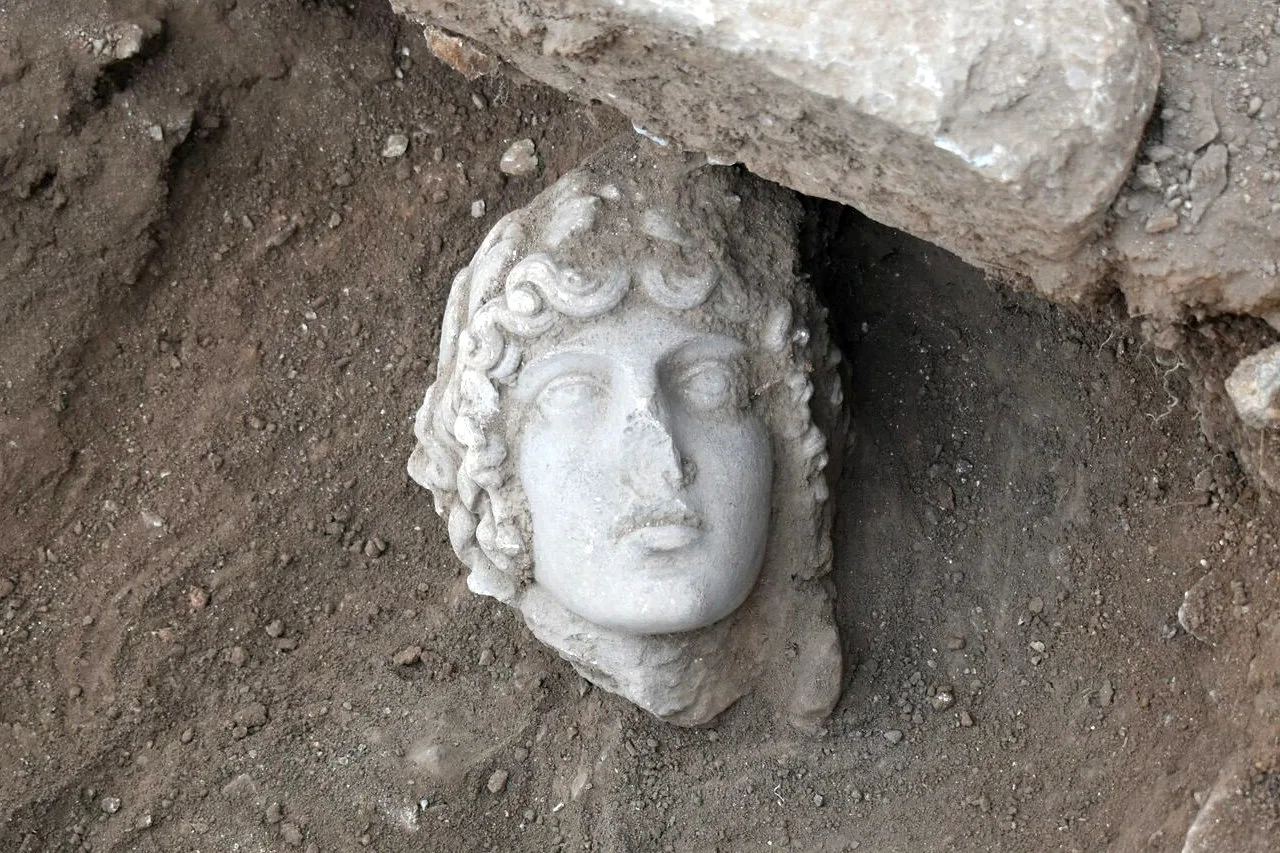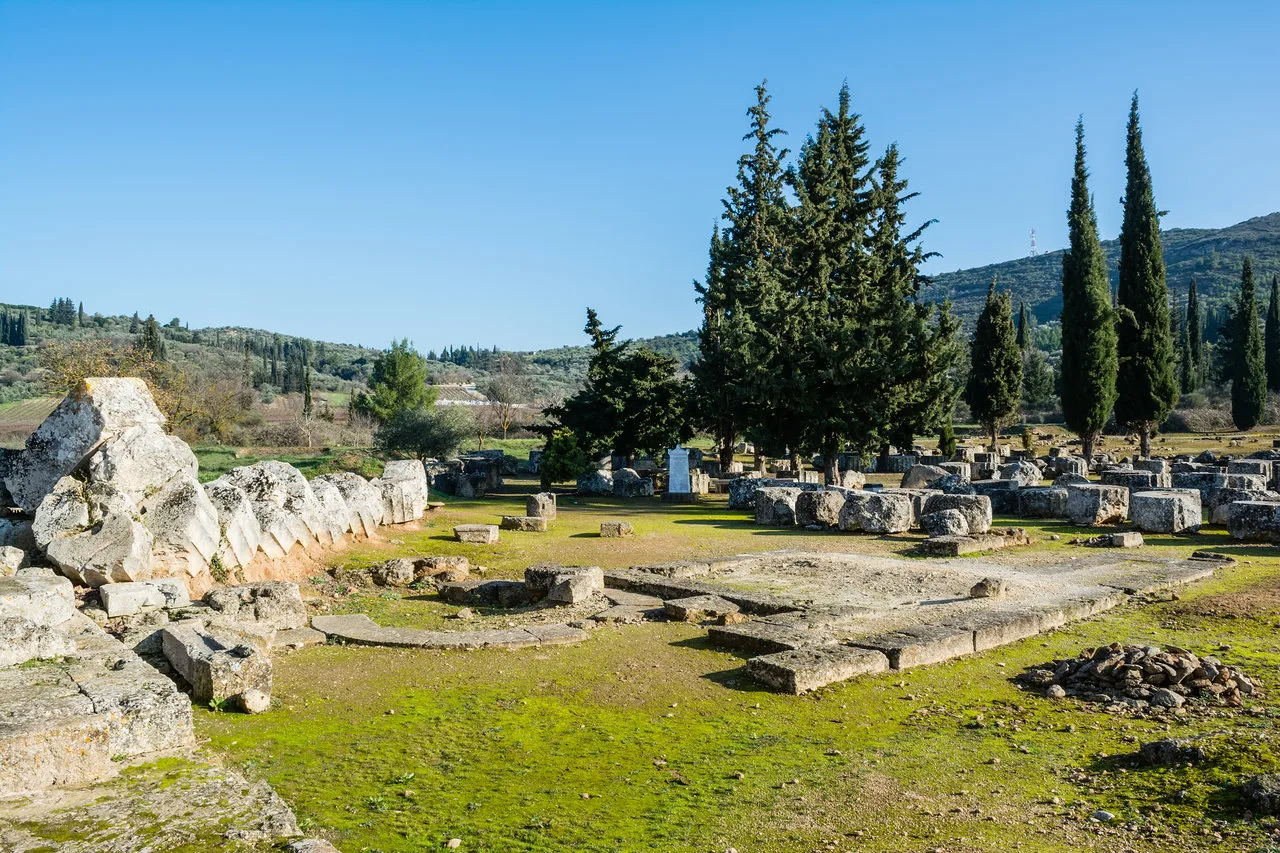Unearthing the Splendors of Philippi
Discovering Apollo’s Face at Philippi
The archaeological dig at Philippi in Northern Greece has unearthed a stunning find: the head of a statue believed to belong to the god Apollo. This revelation is the result of the diligent work of the team from the Aristotle University of Thessaloniki, led by Professor of Byzantine Archaeology, Natalia Poulou. She was assisted by Assistant Professor of Byzantine Archaeology Anastasios Tantsis and Professor Emeritus of Byzantine Archaeology Aristotelis Mentzos. Fifteen students from the university participated in this endeavor, supported by the institution’s regular budget and the Research Committee.
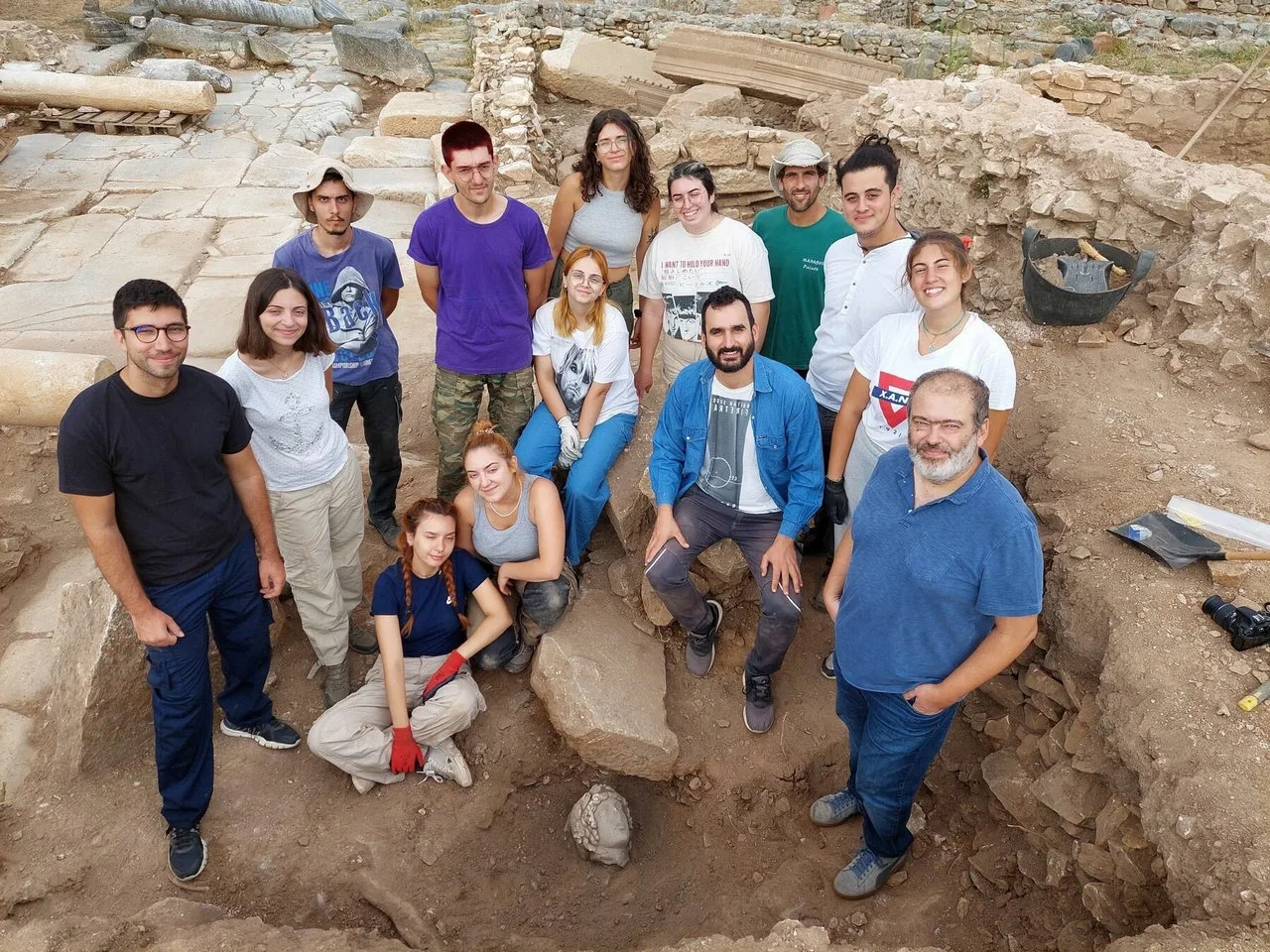
A City Unearthed
This year’s (2023) excavation extended east of Philippi’s main southern road (decumanus), revealing the continuity of a paved road where a coin from the time of Emperor Leo VI (886-912) was found, indicating the road’s period of use. The intersection of this road with the northern axis of the city, “Via Egnatia”, revealed a square dominated by a richly decorated building. Previous excavations had suggested that it was a fountain, a hypothesis supported by this year’s finds, including the head of a laurel-crowned, beardless man, which shed further light on the form and function of this site.
Enriching our Understanding of Byzantine Public Spaces
The Ministry of Culture highlights the importance of these findings for understanding the decoration of public spaces in major Byzantine cities, including Philippi. Classical and Roman statues continued to adorn buildings and public spaces in Constantinople well into the late Byzantine period. This practice, as seen in Philippi, underscores the importance of the city and the continuity of artistic traditions across the centuries.
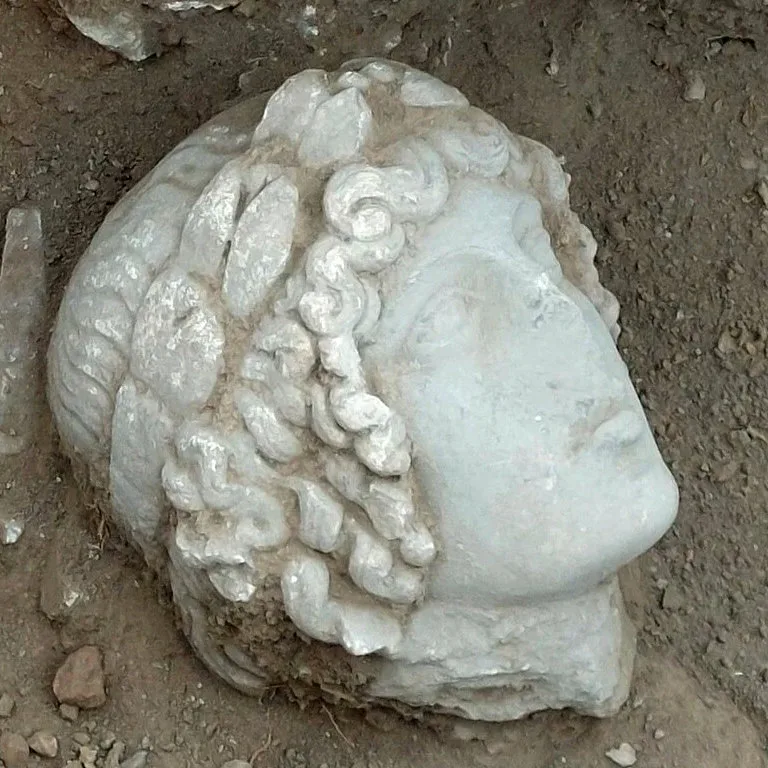
Continuing the Legacy
Excavations at Philippi will continue, promising further insights into the life and culture of the ancient city. The ongoing discoveries at Philippi offer a vivid window into the world of ancient Greece and the Byzantine Empire, bridging historical eras through the artifacts and structures that emerge from the ground.
Each find, from statues to coins, tells a story of cultural richness, religious devotion, and artistic achievement, inviting us to explore and appreciate the legacy of the past that continues to inspire today.
Browse our Tours Visiting Philippi
The Importance of the Archaeological Site of Philippi
A cradle of history and culture
The archaeological site of Philippi, located in the northeastern part of Greece, stands as a testament to the rich tapestry of human civilization that has spanned the centuries. This ancient city, originally founded by Philip II of Macedon, the father of Alexander the Great, has been a focal point of various cultures, including Macedonian, Roman, and Byzantine, making it a crucible of history that has contributed significantly to our understanding of the ancient world.
A Confluence of Civilizations
Philippi’s strategic location on the Via Egnatia, the Roman road that connected the eastern and western parts of the Roman Empire, made it a vital commercial and military route. This ensured that the city was not only a hub for trade and cultural exchange, but also played a crucial role in historical events such as the Battle of Philippi in 42 BC, which marked a pivotal moment in Roman history following the assassination of Julius Caesar.
A Spiritual Heritage
Philippi also holds a special place in Christian history. It is the site of the first Christian church founded in Europe by the apostle Paul. Paul’s letter to the Philippians is an integral part of the New Testament, underscoring the city’s importance in the spread of Christianity. The archaeological remains, including the octagonal church, testify to the city’s religious importance throughout the ages.
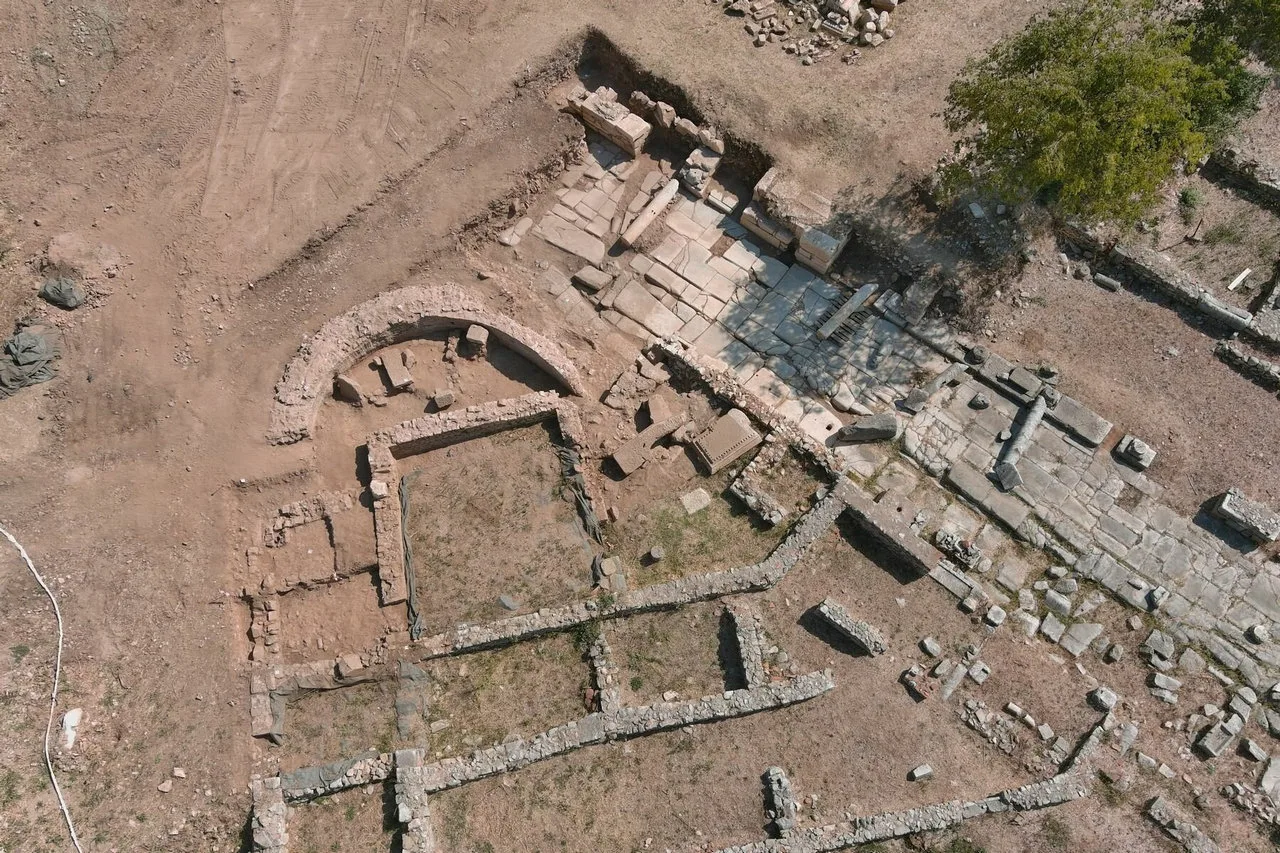
A UNESCO World Heritage Site
Recognized for its historical, cultural and spiritual significance, the archaeological site of Philippi was inscribed on the UNESCO World Heritage List in 2016. This distinction underscores the universal value of Philippi and preserves its ruins and legacy for future generations to explore and appreciate. The site continues to be a beacon for scholars, historians, and tourists, offering insights into the life, architecture, and art of ancient civilizations.
Unveiling the Past, Enriching the Future
Excavations at Philippi have unearthed numerous artifacts, structures and monuments, each adding a piece to the puzzle of our ancient past. From the impressive theater to the acropolis, forum, and intricate mosaic floors, Philippi invites us on a journey through time that reveals the complexity and richness of ancient societies. These discoveries not only enhance our historical knowledge, but also remind us of the enduring creativity, resilience, and quest for understanding of the human spirit.

